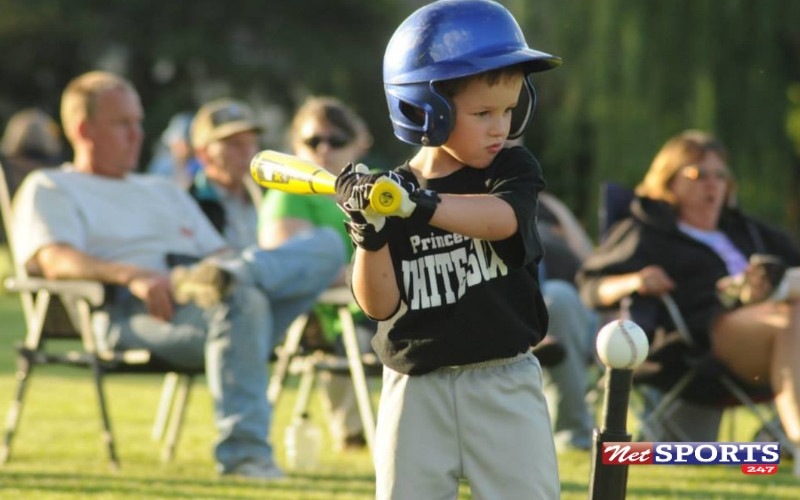Introduction
Is your child about to try baseball for the first time? The best place to start is the tee ball (sometimes known as t-ball) which kids will be just starting on their baseball career. Tee ball rules are also simplified unlike traditional baseball to ensure that the game is safe, fun and easy to children.
Rather than going against a pitcher, children swing against an inanimate tee. Such minor change can change the world–it can decrease frustration and increase confidence.
The popular youth sports have been proven by the fact that more than 2.2 million kids in the U.S. play tee ball annually. You will find all the details about t ball rules in this guide such as the rules of playing the game, the machinery your child will require, how the field will be set up, or how you can both have your child registered in a league.
We will also discuss about what to expect on practices and games and how to help your young athlete. Are you new to youth baseball or do you just want to know the rules of t ball then the following guide will take you through everything.
What is Tee Ball?
The Basics
Tee ball is a modified form of baseball created for young children, usually ages 4 to 7. The biggest difference? Instead of a pitcher throwing the ball, the ball sits on a stationary tee. This allows children to focus on making contact and learning the basics of the swing. The game is non-competitive, meaning the focus is not on winning but on fun and fundamentals.
Why Tee Ball Exists
The sport was designed to be a safe and age-appropriate way to introduce kids to baseball concepts. Playing tee ball helps children develop:
- Hand-eye coordination
- Motor skills like running, catching, and throwing
- Confidence in sports
- A love for teamwork and the game itself
Tee Ball vs. Baseball: Key Differences
- No pitching (the tee replaces the pitcher)
- Softer, safer balls are used
- Smaller fields with shorter base paths
- Simplified scoring, with many leagues not keeping score at all
- Emphasis on participation over competition
In short, tee ball is about building skills in a safe, fun environment.
The History of Tee Ball
Tee ball has several “founding stories” from the 1950s and 1960s:
- In Albion, Michigan (1956), Jerome Sacharski introduced the game.
- In Warner Robins, Georgia (1958), Claude Lewis organized youth tee ball.
- In Starkville, Mississippi (1961), Rotarians Clyde Muse and W.W. Littlejohn started their own version.
By the 1970s, Robert Dayton Hobbs registered the “T-Ball” trademark (1971–1973). Later, under President George W. Bush, the White House Tee Ball Initiative brought national attention to the sport. The U.S. Navy even spread it overseas.
Today, tee ball is recognized and organized under groups like:
- T-Ball USA Association
- Little League International
- USA Baseball
Official Tee Ball Rules Explained
Team Composition and Structure
- Teams usually have 5–7 players on the field.
- Ages 4–7 are eligible.
- Games last 45–75 minutes.
- Every inning, all players on both teams bat once.
Batting Rules
- Ball is placed on a tee at home plate.
- No strikes, no strikeouts.
- Every child bats until they hit the ball.
- Foul line: the ball must go 20 feet forward to be considered fair.
- Batting helmets are required.
Base Running Rules
- Players advance base by base on each hit.
- Once a throw is made, the runner must stop at the next base.
- No stealing bases.
- To score, the player must step on home plate.
Getting Out: Three Ways
- Fly Out – Ball caught in air before touching ground.
- Force Out – Fielder with ball touches base before runner arrives.
- Tag Out – Runner tagged by fielder holding the ball.
Fielding Positions
- Pitcher (fields the ball, doesn’t pitch)
- Catcher (places ball on tee, tags at home)
- Infielders: first, second, third, shortstop
- Outfielders: left, center, right field
Innings & Game Completion
- Inning ends after all players have batted.
- No 3-out rule for younger groups.
- Some leagues keep score; others don’t.
Winning the Game
- If score is kept, team with most runs wins.
- Many leagues emphasize fun and don’t record scores.
Essential Tee Ball Equipment
League-Provided Equipment
- Team uniforms (shirt and hat)
- Shared bats
- Helmets
- Safety balls
- Bases and tee
What Parents Should Buy
- Glove: youth-sized, max 12 inches
- Pants: baseball or athletic pants
- Shoes: sneakers or rubber cleats
- Optional: personal bat, batting gloves, equipment bag
Bat Specs
- Length: 25–26 inches
- Diameter: 2.25 inches
- Weight: 17–20 ounces
Ball Specs
- 9–9.5 inches in circumference
- 4–5 ounces in weight
- Soft core for safety
Safety Equipment
- NOCSAE-certified helmets
- Mouthguards, protective cups (recommended)
- Sunscreen, sunglasses
Tee Ball Field Layout and Dimensions
- Base paths: 50–60 feet
- Outfield: 150–200 feet
- Diamond shape, with 20-foot arc foul line
- Pitcher’s area but no mound
- Safety: even surfaces, safe fences, clear dugouts
How to Register Your Child for Tee Ball
Finding a League
- Search Little League Finder (PlayLittleLeague.org)
- Check local parks, YMCAs, and recreation centers
Requirements
- Age Proof: birth certificate or passport
- Residence Proof: utility bill, lease, or school enrollment
Costs
- $50–$200 per season
- Includes uniforms and equipment
- Scholarships often available
After Registration
- Team placement
- Coach assignment
- Schedule provided
What to Expect: Practices and Games
Practices
- 1–2 per week, 45–60 minutes each
- Focus on basics: batting, catching, throwing, running
Games
- 8–12 games per season
- Each player rotates positions
- End-of-season celebration and awards
Parent Role
- Encourage, don’t coach from sidelines
- Bring snacks and water
- Celebrate effort over results
Skills Your Child Will Develop
- Physical: hand-eye coordination, agility, strength
- Social: teamwork, listening, sportsmanship
- Cognitive: rules, strategies, problem-solving
- Emotional: confidence, resilience, joy of play
Tips for Parents: Supporting Your Player
- Practice at home with a tee and glove
- Read baseball books or watch games together
- Encourage effort, not just results
- Avoid comparing your child to others
- Volunteer as team parent or assistant coach if possible
Transitioning from Tee Ball to Coach Pitch
- Kids move up around ages 6–7
- Coaches pitch softly to players
- More structured positions and rules
- Still focused on fun, but introduces timing and competition
Frequently Asked Questions
What are the rules of t ball?
Kids hit off a tee, every child bats each inning, no strikeouts, no stealing bases, and games are short and fun-focused.
What are little league t ball rules?
Little League requires helmets, sets field dimensions, and focuses on teaching fundamentals rather than competition.
What are 6U t ball rules?
For players 6 and under: no outs recorded, every child bats, and games are usually 45 minutes.
Will the new bat rule affect t ball?
Most new bat regulations apply to higher divisions, but parents should always check with their league.
Prediction for Tee Ball’s Future
Tee ball will continue to thrive because it combines fun, learning, and family involvement. With millions of kids already playing, the sport remains the gateway to baseball and softball in the U.S. and abroad.
Conclusion
Tee ball rules are simple, but the benefits are huge. By focusing on fun, safety, and development, tee ball introduces kids to baseball in the best way possible. Whether you’re a parent registering your child or a coach preparing a new team, this guide gives you everything you need to start strong.


















